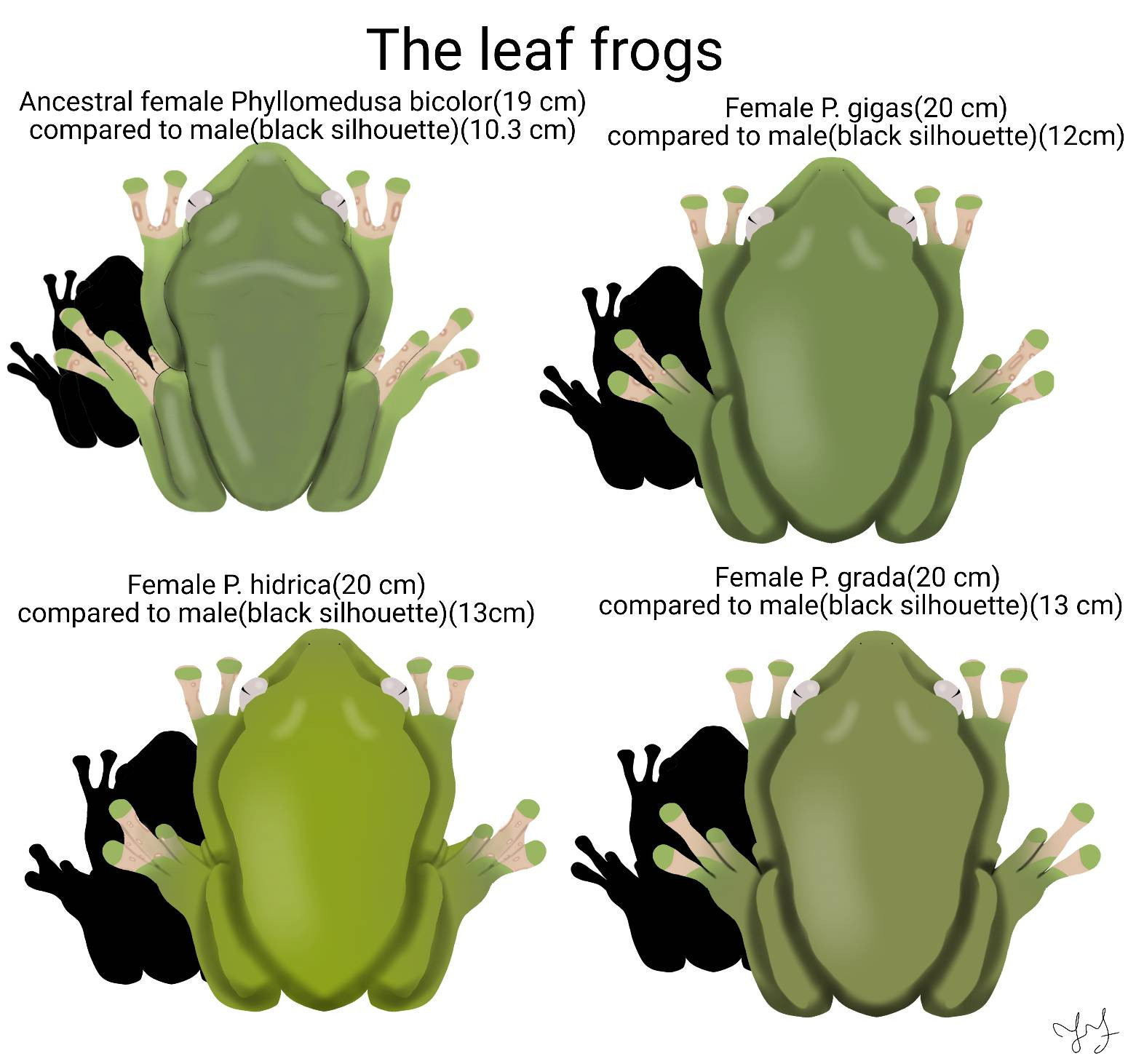HOME | DD
 joaovitor45556 — Frogs of the first Million-Part II: Phyllomedusids
joaovitor45556 — Frogs of the first Million-Part II: Phyllomedusids

#frog #frogs #spec #species #worldbuilding #speculativeevolution #speculativebiology #speculativezoology #batrachiterra
Published: 2023-07-12 17:17:29 +0000 UTC; Views: 2459; Favourites: 23; Downloads: 1
Redirect to original
Description
Today is Wednesday you know what that means? Another frog post, today we are looking at the continent of Batrachia, the second largest continent and home to two frogs, Dendrobates spp. and Phyllomedusa bicolor.Batrachia
Batrachia is, as mentioned above the second largest continent and also the middle continent, in between Bufia and Incilia. It is quite dry evem though warm equatorial currents hit its East side, that is due to the mountain chain present here that even though it is not so high, it causes some Rainshadow effect what leaves the interior of the continent dry, with the predominant biomes being that of savanna, steppe, xeric shrubland and arid desert. While there are some forests in areas that encounter warm currents such as the rainforests of the East coast, mediterranean climates from the tips of the continent, the Western and Northern temperate forests.
The leaf frogs(Phyllomedusa spp.)
Giant leaf frogs are frogs from the Genus Phyllomedusa, specifically from the species P. bicolor. They are known for their skin secretions that are used by indigenous people in the Amazon Rainforest who claim that the poison grants strength or even cure diseases. One of their main characteristics is the extreme size difference between males and females of the species whith the latter being the double of the male's size. Being the largest species in the continent plus the adaptability already present on the other species from this genus on Earth this frog has a predisposition for taking available niches due to the aforementioned Adaptive radiation, exactly what happened here.
Cannibal giant leaf frog(P. gigas)
This phyllomedusid is slightly larger than their ancestral, however their key difference is not physical but behaviorial. These frogs are very active and aggressive, hunting ivertebrates but principally other frogs including their own species such as the males, who are smaller than females. Other than this predacious behaviour no other customs have chnaged much.
Diver giant leaf frog(P. hydrica)
This and the following species have changed behaviorally in quite a drastic way... The Diver giant leaf frog descended from the trees onto the many rainforest's rivers, evolving adaptations for their new life as semi-aquatic predators. Webbed feet is such an adaptation, being used for better underwater propulsion. Another adaptation for a semi-aquatic life-style is not physical but as all other species from this genus, behaviorial. For this new way of living these frogs, as mentioned before have forgone climbing trees and live mostly near water, coming to land from time to time. As they live close to the water they don't have the need of laying eggs in leaves above water, instead laying eggs directly onto the water with a foam-nest for protection of the eggs.
Ground giant leaf frog(P. grada)
The last but not less important species, the Ground giant leaf frog exploits a niche that the other frogs on the continent don't, large terrestrial frogs. This niche isn't occupied by any other frog as the poison dart frogs are not large enough to compete with the Giant leaf frogs and so this niche was free to be taken. Thus this frog predates upon many animals on the soil including other frogs. Their egg-laying behaviour is somewhat a mix of both previous species, being able to lay eggs above water, hanging on leafs glued together and underwater too, among plants and protected by a "foam".
























